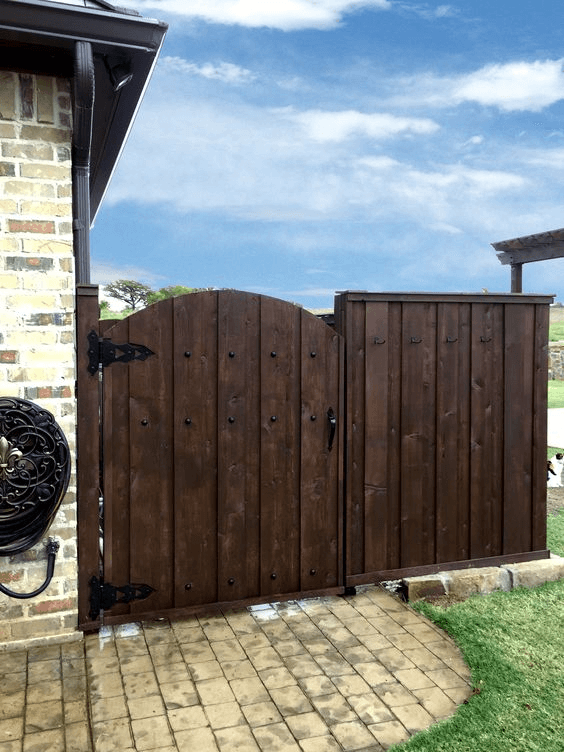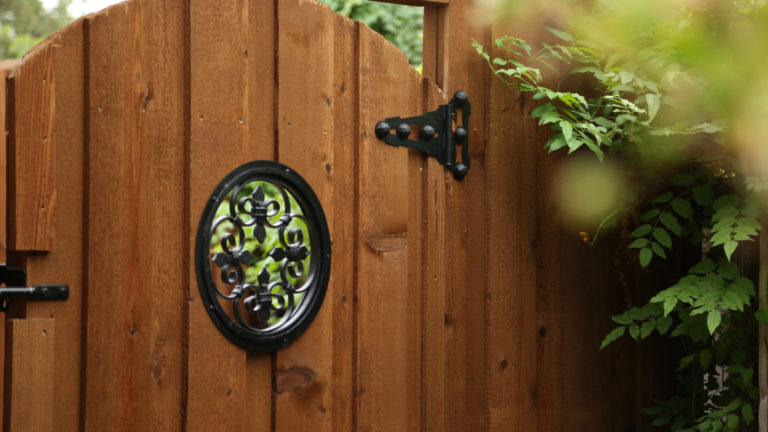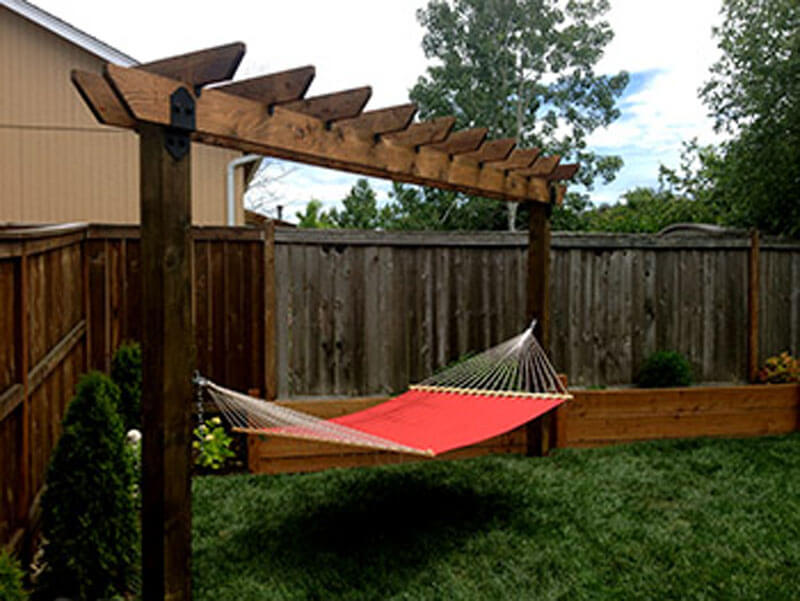How to Choose a Stain Color for a Fence: Pick a Fence Stain Shade You Won’t Regret
I’ve always been pretty good at building things, but choosing decorative elements has never been my strong point. So, I found myself facing a challenge as I set out to choose the right stain color for my new fence. It was a high-stakes decision because stain is not like paint, which sits on the wood’s surface. Stain literally soaks into the wood, staining it. You basically have only one shot because the alternative—layering stain colors—can result in a muddy mess. So if you don’t like the color you’ve chosen, you’re more or less stuck with it until sun and time fade the color, allowing you to re-stain it a different shade. But that can take years, particularly if you’re using a high-quality stain product that’s designed to resist fading!
Acknowledging that aesthetic choices are far outside my comfort zone, I struggled to pick out the right stain color for my new fence and matching pergola. So I endeavored to learn all I could about how to choose a stain color for a fence. I’ve compiled some of the most useful tips to help other DIYers who are facing a similar decision.
Look at the Stain Color on Other Structures in Your Yard
“It doesn’t look right with the rest of the yard,” is one of the most common complaints amongst DIYers who picked the wrong stain color. Instead of appearing cohesive and consistent with the nearby structures, the stain makes your fence or pergola stick out like a sore thumb.
To avoid this, look at the colors that are already in use on your home, deck, wooden furniture, and other structures, such as a shed, pergola, or gazebo. Do your best to match the fence stain color to the color used on the other structures. In cases where you cannot closely match the stain on other structures (or if you don’t like the stain on your other structures), choose a color that’s markedly different but complementary.
Also, keep in mind that over time, many stains fade. So you’ll need to consider if a less intense variant of the stain that you’re considering would work well with the other structures in your yard. This is especially true for many of the brighter, bolder stain colors, which tend to see a more dramatic fade (vs. lighter, less prominent stain colors.) You’ll need to commit to re-finishing on an annual or biannual basis if you don’t like the way the color looks when it’s faded a bit. Opting for a high-quality stain and wood sealer product can also maximize the stain’s lifespan, as well as the lifespan of the wood.
Test the Stain Color on the Wood You’re Using
The picture on the label and even the in-store wood swatch can be very different from the actual stain color. The actual wood type also plays a big role in terms of how the stain will look.
For instance, a stain will look brighter and bolder when applied to a very light blonde wood, whereas that same stain color may appear darker, more muted, and a bit ruddy when applied to another species of wood with reddish undertones. This means that it’s very important to test the stain on the exact same wood that you’re planning to stain. Keep some wood scraps from your DIY project to test out different stain colors.
Consider the Lighting When Picking Stain
Just like when you’re picking a paint color for a room in your house, you need to think about the lighting. It makes a difference where you view the stain color. A color that looks great under fluorescent lighting in a store may not look so fabulous when viewed outdoors in direct sunlight. Be sure to evaluate the samples and make your final decision while you’re outside.
Ideally, you should view your stained wood swatches in the exact environment that you’ll be staining. A color might look too bright in the direct sunshine, but that same color could look perfect on a fence that’s situated in a shaded portion of your yard.
Color Looks Different When Applied to Large Structures
Again, just like painting a room, think about size and area. It’s not uncommon for a color to look great on a small swatch, but take on a different look when you apply it to a whole fence. Spaces can appear larger or smaller depending upon the color you choose.
Darker colors tend to make small spaces look even smaller (good to keep in mind when staining a gazebo or pergola), while an already-large space can look a bit smaller and cozier in a dark stain. Lighter colors will make a small space appear larger and more airy, while a vast, open space could look even more spacious with a light color. A fence may look less prominent in a lighter color, especially if viewed against the grass, rather than against trees. A darker-stained fence will tend to have a less rustic, more sophisticated look, and it will often stand out more. You’ll want to keep these points in mind as you pick the right stain color for your fencing project.
Consider HOA or Neighborhood Association Regulations
If you live in a gated community with a homeowner’s association or a neighborhood that’s governed by a neighborhood association, you’ll need to find out if there are any restrictions or guidelines on fence colors before you stain. Some HOAs require residents to choose from just two or three pre-approved stain colors, while others may just need to approve the stain color in advance. Other associations may not have any restrictions or guidelines on stain color, but it’s important to research this point because the potential fines can be large.
As I set out to find the right stain for my new fence and pergola earlier this year, I was pleased to find that my go-to supplier for outdoor DIY projects—including fencing hardware—also has a line of wood stain and sealer.
OZCO’s Lumber Shield Oil Base Wood Stain is a professional grade, low VOC semi-transparent product that works really well for lots of projects, including fences, pergolas, arbors, trellises, raised planter boxes, and gazebos. As an oil-based formula, it’s longer lasting than water-based varieties and it actually seals the wood, while preventing formation of mold, mildew, and fungus. It was exactly what I needed to give my fence the perfect final touch.
OZCO has also been my source for a variety of different step-by-step project plans. I built my pergola and an arbor from their free plans and I’ve got my eye on a garden planter table as my next DIY endeavor. And if you run into any issues along the way, OZCO’s friendly team of experts are available to address your questions and concerns.












Leave a Reply